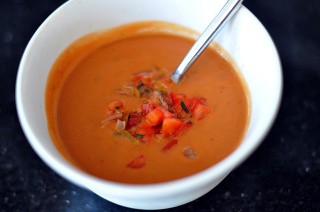At this point, we’ve all heard of tapas. And, yes, Andalusian cuisine has long been famous for it (and justifiably so). But there’s so much more than just tapas going on here. A majority of Andalusian dishes contain a wide array of ingredients, including olive oil, fish, nuts, red wine and fruit, among others. Below, I’ve outlined some of my favourites.
A Brief Introduction to Andalusian Cuisine

Churros con chocolate
A great breakfast treat—assuming, of course, your stomach can handle these long, tubular doughnuts served with thick drinking chocolate. (Sidebar: Are there two words in the English language that sound better together than “drinking chocolate”? Didn’t think so.)
Serrano ham
A ubiquitous pork product in Andalucia, Serrano ham embodies the farm-to-table ethos; it’s produced from locally raised pigs.

Paella
A base of golden, saffron-flavoured rice dotted with chicken, pork, shellfish and calamari.
Sweets
Plentiful in Andalucia, many of the local sweets originate from Arab traditions. Tocinos del cielo are made by nuns in convents, and polvorones, mantecas, alfajores, roscos de vino and other treats come from a village in the Sevillan province of Estepa. Pestinos and torrija, are an Easter week treat of bread soaked in wine, coated with egg, then fried and covered with honey. Mostachones are egg flans, and carne de membrillo, from Puente Genil, is an aniseed, ring-shaped biscuit.
Feeling inspired to taste your way through Andalucia? Get in touch with Christine Tucker to see how she can start planning your perfect Andalucian escape.


